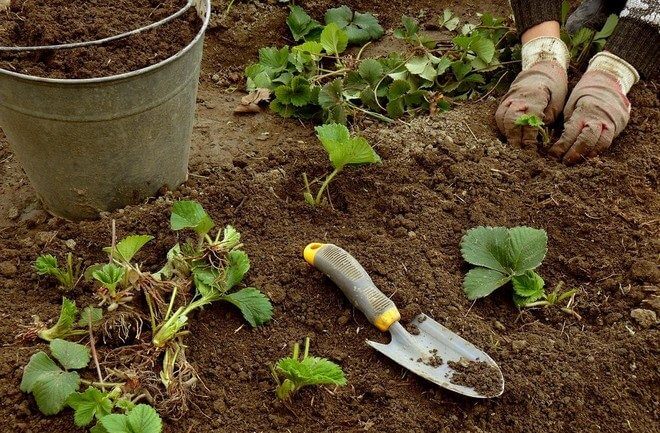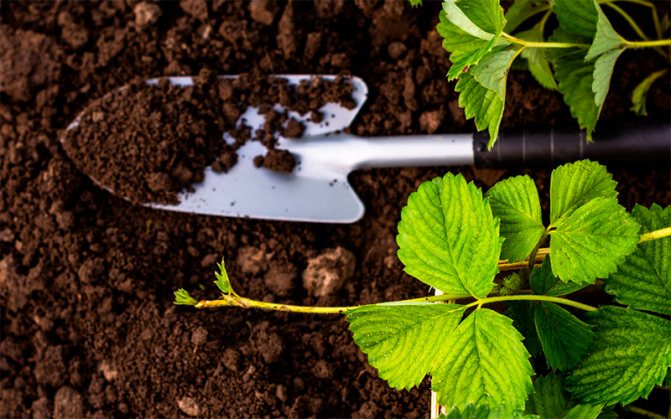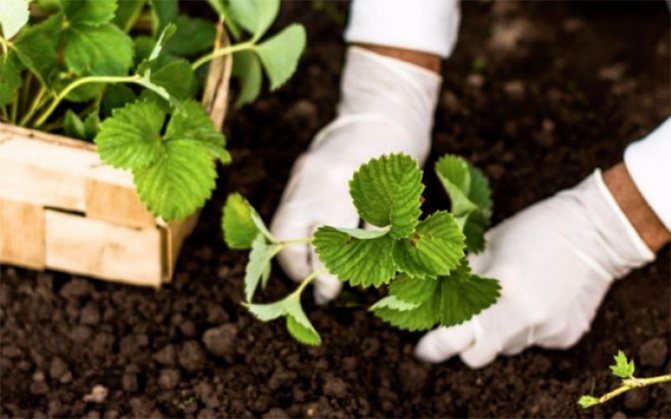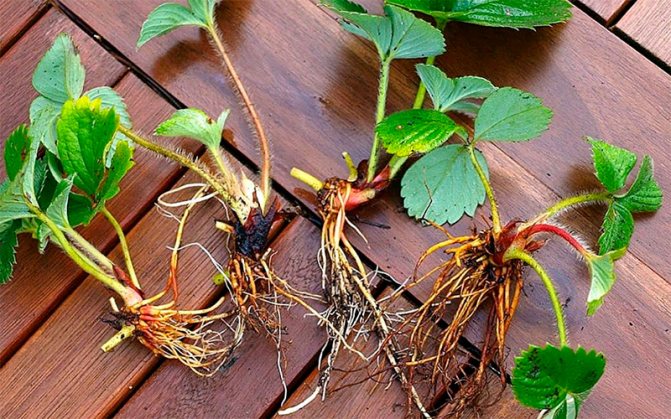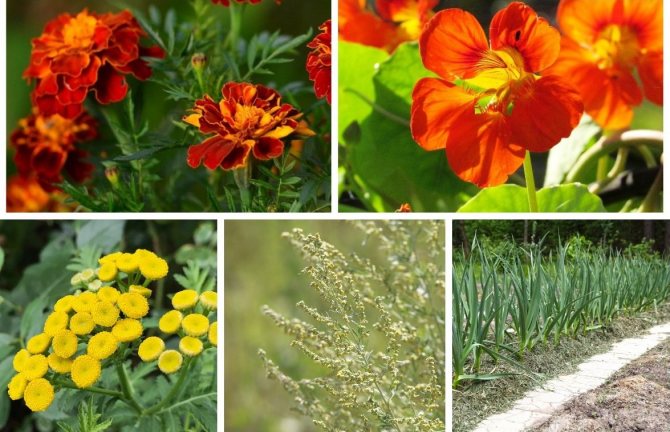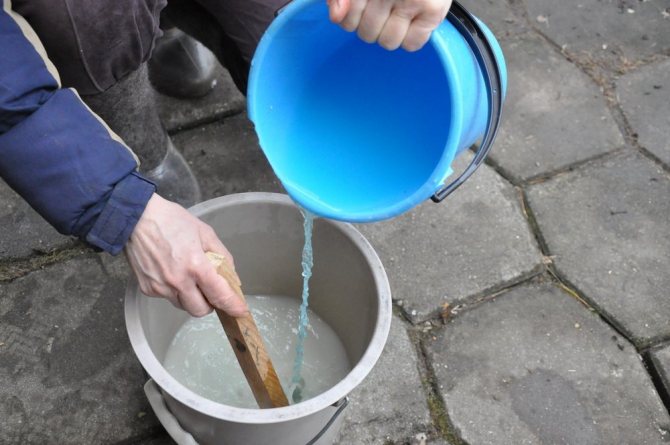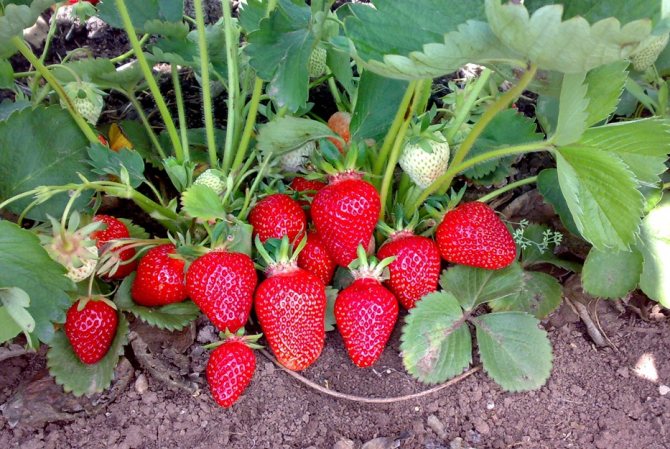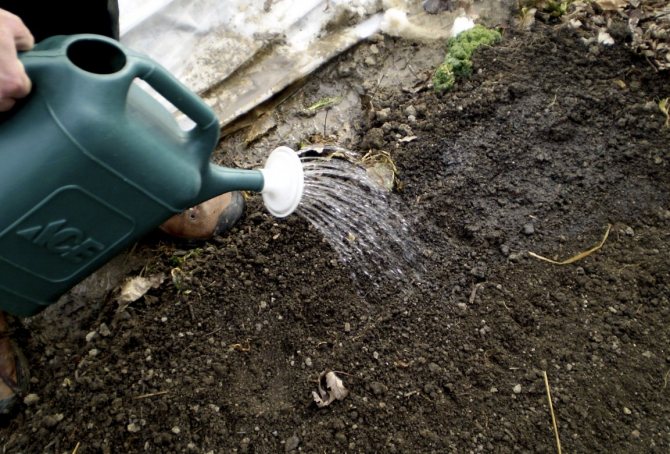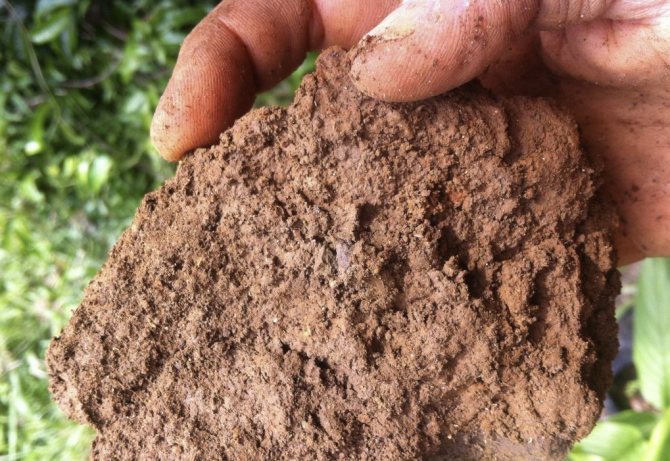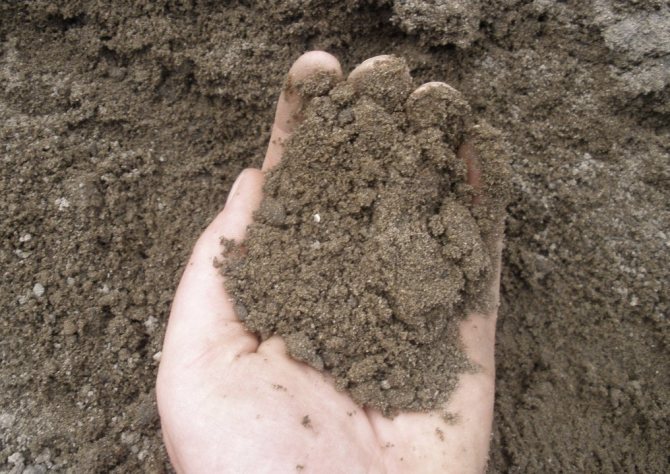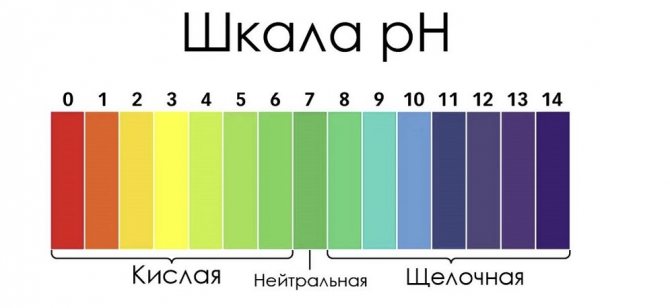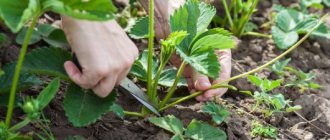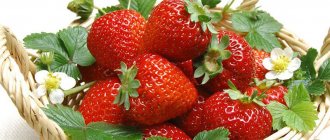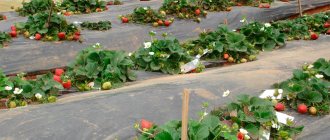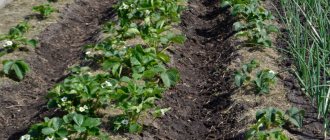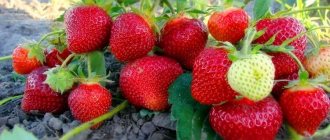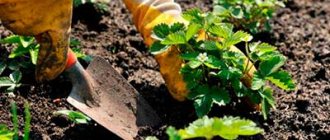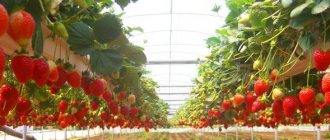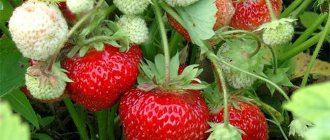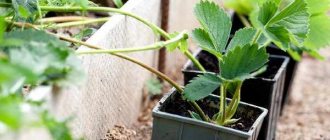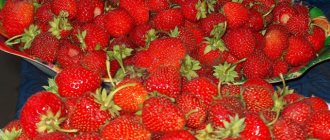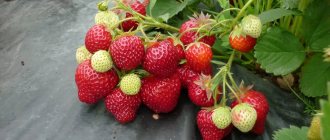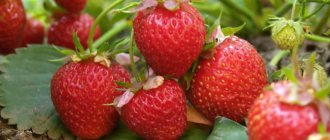Home / Garden / Berries
Back to
Published: 21.12.2019
Reading time: 3 minutes
0
44
Garden strawberry, or as it is also called, strawberry is a very demanding plant. You can get a good harvest when growing at a summer cottage, observing the basic rules. The plant is sensitive to the composition of the soil, therefore, before planting, it is necessary to clarify what kind of soil the strawberry loves.
An overly acidic or alkaline soil is not suitable for this plant, it must be slightly acidic or neutral. To get a good harvest of berries, the area under the crop must be regularly disinfected and fertilized.
- 1 How to properly prepare the ground? 1.1 Suitable landing site
- 1.2 Soil disinfection
- 1.3 Soil fertilization
Choosing a place for strawberries
Before you start preparing the soil, decide where to plant your strawberries. The quantity and quality of the crop depends on the correct choice of place.
The place for planting strawberries must have the following characteristics:
- well lit by the sun. If you plant strawberries in the shade, leaves will develop more actively, rather than berries. The fruits will be smaller and sour, and ripening will be delayed;
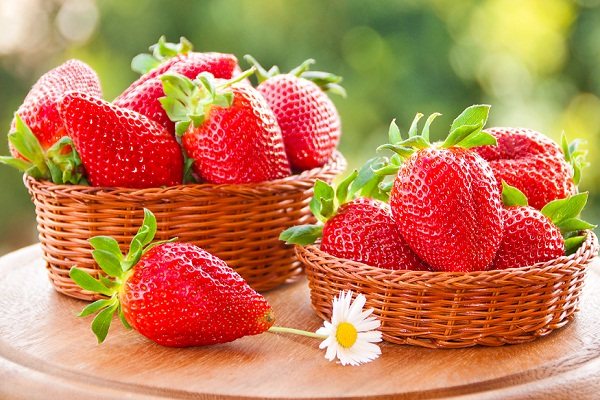
To get large sweet berries, you need to plant strawberries in a well-lit area.
- have a groundwater level not higher than one meter. With prolonged waterlogging, the delicate roots of strawberries can rot. If your site is with a high groundwater table, plant strawberries in bulk beds 15–20 cm high;
- be protected from the wind. Experienced gardeners advise planting strawberries between currant and gooseberry bushes;
- be located on level ground. It is good if there is a slight slope in the southwest direction. Place the rows not along, but across the slope. This will help keep the spring melt water, and during heavy rains, the top fertile layer will not be washed off. Avoid planting strawberries on steep slopes or in low areas where cold air builds up;
- to be cleared of perennial weeds - wheatgrass, sow thistle and others.
Strawberries are grown in one place for no more than 4-5 years. After this period, the berries become smaller, the yield decreases. When choosing a new location, observe the crop rotation. The best predecessors are:
- onion,
- garlic,
- carrot,
- any greens,
- legumes and green manure.
Do not plant berries after potatoes, cucumbers, and tomatoes. These crops are often affected by fungal diseases, which are dangerous for strawberries. The berry can be returned to its original place no earlier than after 4 years.
When choosing a place to plant strawberries, try not to place the garden close to trees. Once I made a mistake with the choice of the place, having made a bed not far from the apple tree. In the spring, when the leaves had not yet blossomed, the strawberries were fully illuminated by the sun. Then, due to the abundant foliage, my garden was in the shade for a good half of the day.
How to increase fertility
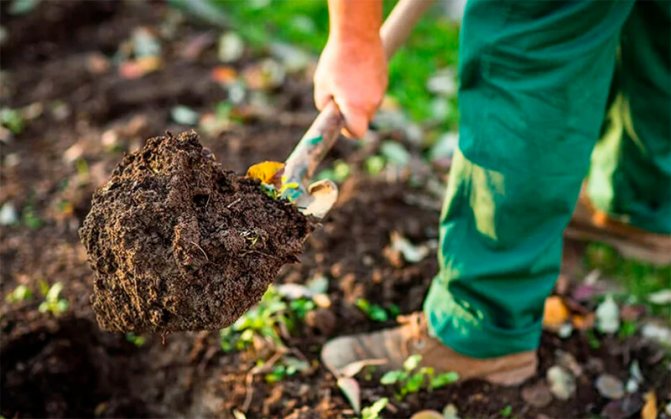

The main rule that must be taken into account to increase crop yields is crop rotation. Many plants drastically drain the soil, so it needs to rest. Others, in turn, improve its quality. These include cereals and legumes. It is worth practicing mixing plantings, planting cultures of different families nearby.
Every year, during spring digging, organic matter is introduced under the bushes. Can be used:
- compost;
- chicken droppings;
- mullein;
- humus.
The compounds contained in organic fertilizers are sufficient to saturate the soil with the required mineral components. Biohumus is used to restore fertility.
The soil cannot be used all the time; it must rest for a while. To restore quality, organic compounds are added to it for replenishment. Cultivation of garden strawberries on the same plot is possible for 2-3 years.
Soil mulching
Mulching strawberry beds is a prerequisite for growing a good harvest of berries. It is necessary to:
- retain moisture in the soil;
- limit the growth of weeds;
- improve the fertile layer;
- make the soil structure looser and more breathable;
- prevent rotting and contamination of ripe berries (they do not come into contact with the ground) even after rain, when the soil is wet.
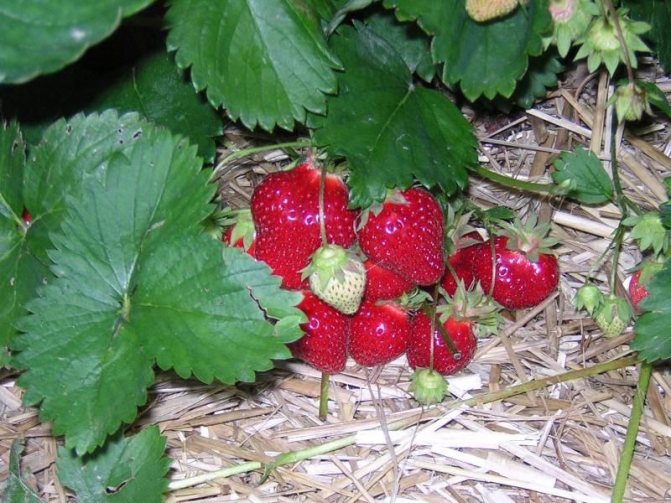

Even in damp weather, the berries in the mulched garden will be clean and will not rot.
The following materials are used as a mulching material:
- straw or grass cuttings;
- agrofibre black;
- coniferous litter or branches of coniferous trees;
- shavings and sawdust;
- humus and compost.
Photo gallery: mulching strawberry beds
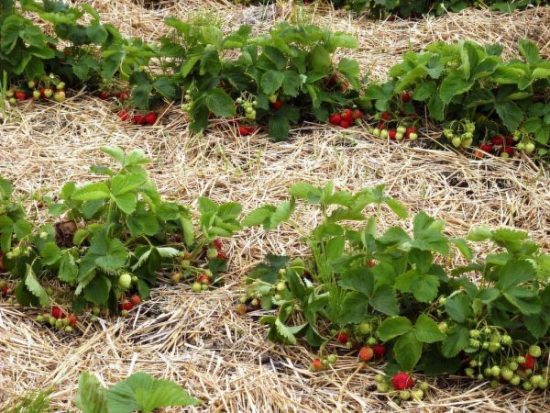

When straw or grass is rotted, a hay bacillus develops, killing fungal infections
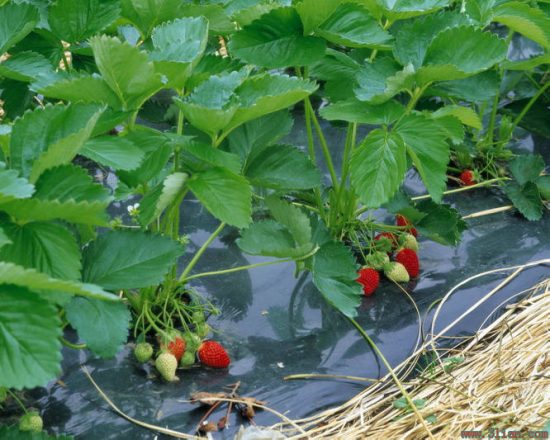

Agrofibre protects the soil from drying out and weeds
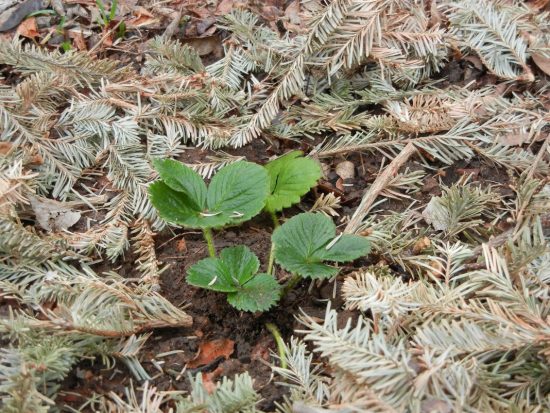

Needles increase the acidity of the soil, so use it with caution on acidic soils.
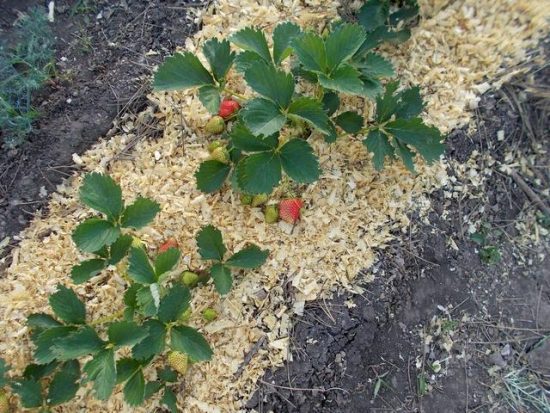

Rotten shavings and sawdust acidify the soil, so you need to periodically add ash or dolomite flour
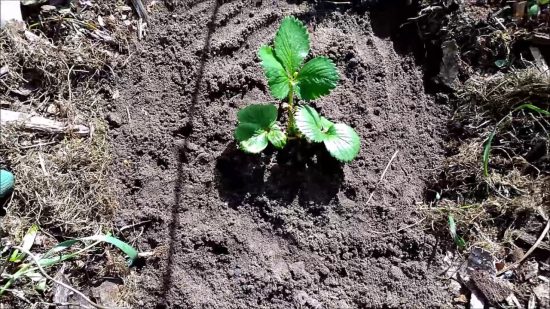

Humus or compost as mulch requires frequent renewal, as it is quickly processed by microorganisms
Tips for beginner gardeners
If the composition of the soil on your site leaves much to be desired, it is possible to "prepare" the soil with your own hands.
Sequencing:
- The top layer, 8–10 cm, is removed from the forest podzolic soil.
- Several layers are folded into a 100 × 80 cm pile.
- Before laying, each layer is abundantly moistened.
- The collar is tightly closed with a film, having made several holes in it for air access.
- Under the polyethylene shelter, the temperature rises, which leads to the "burning" of all microorganisms and plant residues in the soil.
- After 3 months, the composition of the earth layers in the pile becomes ideal for growing sweet and aromatic berries.
Did you know? The record weight of strawberries was recorded in 1983 in the United States. The mass of the berries grown by a local farmer was 231 g.
Having properly prepared the soil for planting a crop, the gardener will receive an excellent harvest. However, one should not forget about the timely care of strawberries.
Choosing varieties and seedlings of garden strawberries
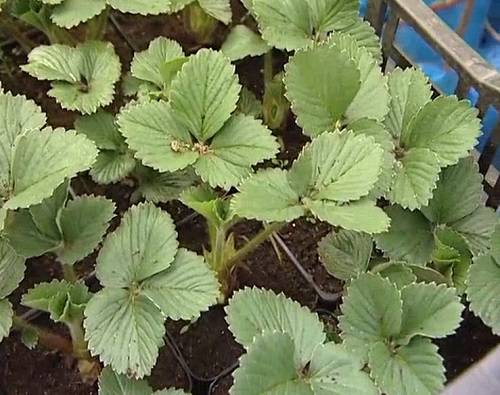

So, we have chosen a place for planting strawberries, the soil has been prepared in advance.
Now we will decide what varieties we will plant. Above all, try to choose local, regionalized strawberry varieties that have already proven themselves in your climatic conditions.
In order to have these magnificent fragrant berries on your table for as long as possible, I advise you to purchase some early ripening seedlings (10%), medium early and medium-sized ones (60%), as well as late ripening varieties (30%).
Do not forget to plant remontant varieties, both wild strawberries and garden strawberries. And then you will have berries from spring to the very frost.
We buy seedlings
Pay great attention to the quality of the planting material, because this is the basis of all your future harvests.
Of course, it is best to buy seedlings in proven nurseries, where they will be strong and healthy.
It is advisable not to buy from the market or from strangers, as there is a risk of acquiring weakened, infected plants or even seedlings of weed strawberry varieties, which we talked about in the previous article.
What should you first of all pay attention to when buying strawberry seedlings:
- They should be stocky annuals with a rosette with 3-5 leaves.
- The root system is well developed and not shorter than 5 cm.
- The apical kidney (heart) is strong and well developed.
- The diameter of the horn is at least 1.5 cm.
- Seedlings should not be elongated, overgrown, or, conversely, frail.
Usually we plant strawberry seedlings with one horn, but if you see two-horned seedlings on sale, then take it without hesitation, as you are incredibly lucky.
In order to save the family budget, you can not buy a large number of seedlings, but purchase several bushes of the varieties you like and propagate them yourself.
To do this, we plant the purchased seedlings on a specially designated small area (school) and surround them with care and attention.
We remove the peduncles in time, carefully lay out the whiskers that appear and help the small rosettes take root in the soil, making holes for them and watering them.
Thus, we can get up to 40-50 seedlings from each mother plant.
We grow seedlings ourselves
If this is not the first time you are planting garden strawberries and you already have a plantation of this berry, then for new plantings you can already use your planting material.
When picking berries, notice the strongest and most productive bushes (no more than 2 years old) with approximately the same berry size and without any diseases.
From them, we will subsequently take a mustache for laying a new plot of garden strawberries. The mustache usually begins to grow in mid-summer.
When our marked bushes bear fruit, the process of forming a whisker and rooting of rosettes will begin.
Here it is necessary, without postponing the matter indefinitely, to select the most powerful sockets of the first order (in the extreme case of the second).
As a rule, weaker bushes grow from sockets of the following orders. Keep in mind that young plants produce whiskers a little earlier than fruiting ones.
Attention! Another nuance in the selection of outlets for planting. It turns out that not all young strawberry rosettes are capable of bearing fruit. They can be conditionally divided into "girls" and "boys".
So the "girls" usually give an excellent harvest, but the "boys" will leave you without it. Such bushes give a lot of whiskers, intertwining the whole garden, if they are not cut off in time.
How can you tell where who is? Firstly, for planting, it takes only the outlet closest to the mother bush; secondly, “girls differ from“ boys ”by a more powerful rosette of leaves.
But it is much easier to separate "boys" from "girls" when planting in spring. In spring, all “males” have only two leaves, while “girls” have three.
If large-fruited garden strawberries are best propagated with the help of a mustache, then seedlings of small-fruited remontant strawberries can be perfectly grown from seeds.
And although this is a rather laborious and troublesome process, the result is worth the effort and time.
We usually sow strawberry seeds in March. If you want to get berries already this year, then sowing is better done early - at the beginning of February.
This, of course, will create additional troubles: creating the desired temperature regime, supplementary lighting, construction of shelters for early planting of seedlings.
We sow seeds in boxes about 8 cm high, which we fill with loose soil. We level the soil, water and scatter seeds over its surface.
Strawberry seeds are very small, so you don't need to sprinkle them with earth on top, but sprinkle them lightly with water from a spray bottle and they will be a little "drawn" into the ground. This will be enough for them to germinate.
Or, you can carefully sprinkle them with sand on top through a sieve, about 1 mm.
After sowing, close the boxes with foil or glass, put them in a warm, dark place and wait for the shoots.
The seeds can germinate (depending on the variety) after 10 days, and after 30, or even after 45 days. Therefore, you need to be patient and not despair when the seeds do not germinate for a long time.
For planting strawberry seeds, you can also use plastic boxes with lids.
When 2-3 true leaves appear, we proceed to planting the plants in separate pots.
If you are in no hurry to get berries as early as possible, then perhaps the most favorable period for sowing strawberry seeds is from early May to late June.
Having planted the seeds within this time frame, we will get excellent seedlings in the first year without much hassle.
I plan to describe all the methods of breeding our favorite strawberries in more detail in a separate article.
Preparing for planting
To ensure stable fruiting of strawberries, it is better to carry out preparatory measures a week before planting. In addition to digging the earth, this includes marking the beds, leveling its surface. And since any plant needs vital elements, fertilizers are applied to the soil.
Before planting strawberries, they do not fertilize the soil in the garden with fresh manure, increased doses of mineral complexes. If potassium chloride is used, then the soil is fed with it in advance, in the fall or spring, a few months before planting the berries, so that the chlorine goes into deep soil layers.
In addition to natural chernozem, a little turf and peat are part of the soil on the site for the berry. For looseness, you can add sawdust.
A year or two before planting a garden culture, snow retention is carried out on the site, which will increase the soil moisture. Currant currants, staggered, will help to hold the snow. The curtains are replaced by installing wooden boards up to 80 centimeters high, installing them every ten meters.
There are two planting dates - spring and summer. By mid-April, the top layer of the soil is removed on the selected site. The thickness of the removed layer is ten centimeters. If further the soil is dry, then it is moistened. To saturate the earth with oxygen, a vapor barrier film with air holes is laid on top.
As soon as the bed under the material has warmed up, it is removed. Having cleared the ground from the remaining roots, the larvae of the May beetle, they begin to plant strawberries.
If the procedure is planned to be carried out in August or September, then the preparation of the site begins two months before the selected date.
Watering
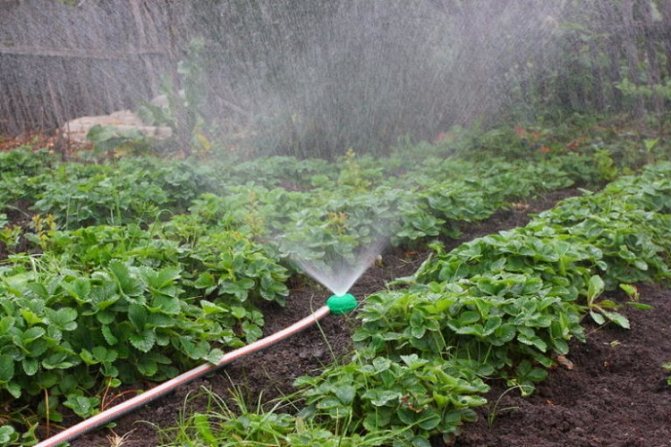

Watering methods when growing strawberries
- Taking into account the moisture content of the soil, we water the strawberries daily, since this plant is moisture-loving
- It is best to irrigate in furrows made along the rows, or by sprinkling
- In order for the moisture to be sufficient, 1.5-2 buckets of water per 1 m2 are required. It is desirable that the water for irrigation be heated and rich in oxygen. To do this, leave it in an open container for some time before watering.
- To preserve the plantations from frost, we water it in the late evening.
Soil composition
It is difficult to find the ideal place for each culture in the garden, but it is possible, by laying a strawberry plantation, to enrich the soil in accordance with the agrotechnical requirements of growing berries. On heavy clay soils, river sand is applied along with organic fertilizers. In this case, the site is deeply dug up to 27-30 centimeters or it is plowed. Sandy lands are fertilized by adding manure or compost. Ideal for strawberries will be soil with a 3% humus content.
Humus is called nitrogen compounds, which saturate the soil with microorganisms, receiving them from rotted plant residues. In the creation of the nutrient layer, earthworms play an important role.
The dying parts of the plant, decomposing in the soil, turn into humus containing useful substances. These include humic acids, fulvic acids, and their derivatives.
They make the soil loose, turning it into a porous mixture that is permeable to water and air. The layer filled with useful elements does not allow heavy metal salts to negatively affect the roots of plants. The fertility of the soil affects the increase in the yield of strawberries. You can prepare a nutrient layer by storing food waste, weeds, autumn foliage in a designated place, and settling earthworms there.
Strawberries at home all year round! These veneers are 100 times better than a false jaw! And there are pennies! Up to 15 kg of strawberries every month! False dental veneers for a penny! Up to 15 kg of strawberries every month! Famous overhead veneers are now in Russia!
Of the minerals for the favorable development of strawberries, you need:
- Phosphorus. Without it, the berry will not develop a strong root system. The indicator of the norm is the content of ten to fifteen milligrams of phosphorus in one hundred grams of soil. If there is little of it in the soil, then the ground is fed with superphosphate before planting the berries in an amount of 50 to 70 grams per square meter.
- Potassium. Strawberry roots absorb the element well from the soil. But if the site is liming, then manganese and calcium will not allow the element to be absorbed, displacing it. The optimal form of feeding will be potassium sulfate or potassium magnesium. 40 grams of potash fertilizers are applied per square meter of the garden. Do this before planting and during the growing season.
- Magnesium. Strawberries suffer from its deficiency if the acidity of the soil is too low. This element is included in the complex fertilizer because it is responsible for the formation of chlorophyll in the leaves of the plant.
- Calcium. Lack of calcium also negatively affects the state of the plant foliage - it becomes lethargic, deformed. If the soil acidity level is normal, then there will be enough calcium for strawberries.
- Bor. Boron is important for high-quality fruiting, which is washed out of the ground more often than other substances.
When choosing fertilizers containing potassium, pay attention to the quantitative ratio of chlorine in them. Excess chlorine will adversely affect the growth and fruiting of strawberries.
The amount of minerals should not be excessive. This will prevent the berry from developing properly. But since nutrients are quickly washed out of the soil, it is necessary to apply them before strawberry flowering and in the fall after harvest.
